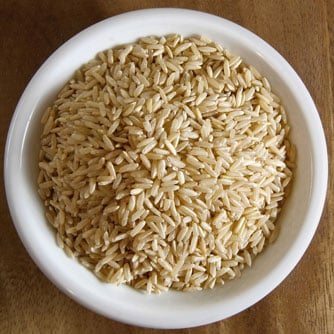Brown rice differs from white rice in both its processing and nutrient profile, as the former retains the other bran and germ portion of the grain thereby retaining most of the fiber content. Qi Sun, from Harvard School of Public Health (Massachusetts, USA), and colleagues analyzed the dietary habits of participants in the Health Professionals Follow-up Study and the Nurses’ Health Study I and II, involving a total of 39,765 men and 157,463 women, tracking for the onset of type-2 diabetes. The team found that those subjects who consumed five or more servings of white rice a week were at 17% increased risk for diabetes, as compared to those who ate less than one serving per month. Subjects who consumed two servings of brown rice a week were at a decreased risk of diabetes, with researchers estimating that by replacing 50 grams of uncooked white rice with the same amount of brown rice, the risk of diabetes was cut by 16%. The researcher conclude that: “Substitution of whole grains, including brown rice, for white rice may lower risk of type 2 diabetes. These data support the recommendation that most carbohydrate intake should come from whole grains rather than refined grains to help prevent type 2 diabetes.”
Brown Rice May Slash Diabetes Risk
Qi Sun; Donna Spiegelman; Rob M. van Dam; Michelle D. Holmes; Vasanti S. Malik; Walter C. Willett; Frank B. Hu. “White Rice, Brown Rice, and Risk of Type 2 Diabetes in US Men and Women.” Arch Intern Med. 2010;170(11):961-969.
RELATED ARTICLES




